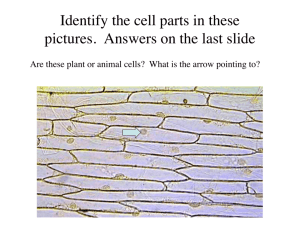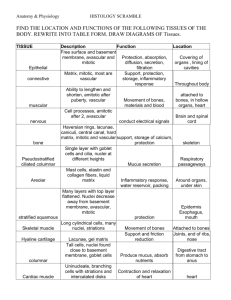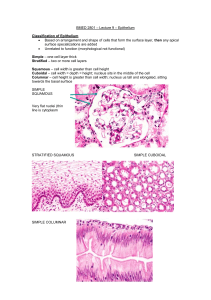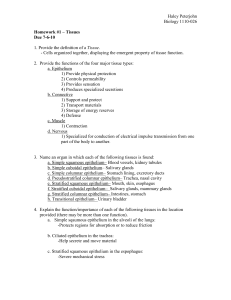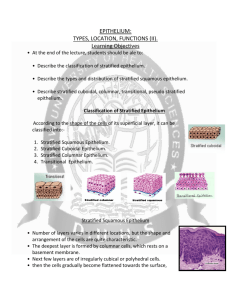PRACTICAL HISTOLOGY LAB.1
advertisement
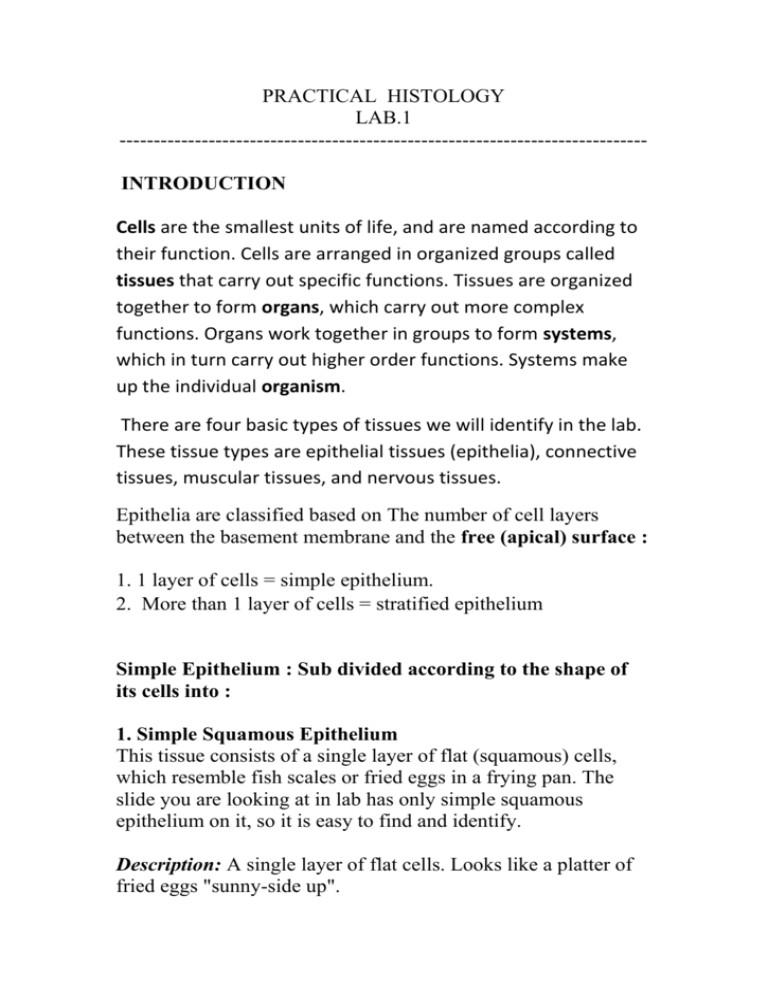
PRACTICAL HISTOLOGY LAB.1 ----------------------------------------------------------------------------INTRODUCTION Cells are the smallest units of life, and are named according to their function. Cells are arranged in organized groups called tissues that carry out specific functions. Tissues are organized together to form organs, which carry out more complex functions. Organs work together in groups to form systems, which in turn carry out higher order functions. Systems make up the individual organism. There are four basic types of tissues we will identify in the lab. These tissue types are epithelial tissues (epithelia), connective tissues, muscular tissues, and nervous tissues. Epithelia are classified based on The number of cell layers between the basement membrane and the free (apical) surface : 1. 1 layer of cells = simple epithelium. 2. More than 1 layer of cells = stratified epithelium Simple Epithelium : Sub divided according to the shape of its cells into : 1. Simple Squamous Epithelium This tissue consists of a single layer of flat (squamous) cells, which resemble fish scales or fried eggs in a frying pan. The slide you are looking at in lab has only simple squamous epithelium on it, so it is easy to find and identify. Description: A single layer of flat cells. Looks like a platter of fried eggs "sunny-side up". Location: Air sacs (alveoli) of lungs, lining the inside of the heart and blood vessels. Function: Filtration, diffusion, osmosis. 2. Simple Cuboidal Epithelium As the drawings and photomicrographs illustrate below, this tissue consists of a single layer of cube-shaped cells. Notice the central location of the nucleus within each cell in this tissue (the distance from the nucleus to the top and bottom of cell is about equal). Description: A single layer of (approximately) cube-shaped cells. Location: Lining kidney tubules and the small ducts of many exocrine glands. Function: Secretion and absorption. 3. Simple Columnar Epithelium Simple columnar epithelium lining the small intestine contains goblet cells, which produce mucous. The mucous helps to lubricate the passage of the food through the digestive tract. Description: A single layer of tall rectangular cells that look like columns. Notice that the nucleus of each cell is about 2/3 of the way down from the lumen, towards the basement membrane. Location: Lines the gallbladder and most of the digestive tract organs (stomach, small and large intestines). Function: Absorption and secretion. 4. Pseudostratified Ciliated Columnar Epithelium This tissue is not really stratified (hence, the prefix “pseudo”). Note that this tissue also contains numerous goblet cells and looks a lot like simple columnar epithelium . Description: Looks like a stratified tissue, but it is not. Each cell sits on the basement membrane, but only some cells are tall enough to reach the free surface. Location: Lines the upper respiratory tract, the epididymis, and part of the male urethra. Function: Secretion and movement of mucous by ciliary action. Stratified Epithelium: 1.Stratified Squamous Epithelium (keratinized and nonkeratinized) this tissue consists of many layers of cells. The cells next to the basement membrane are columnar to cuboidal in shape and the cells next to the lumen are squamous in shape. Stratified tissues are named according to the shape of the cells at the free surface of the tissue. Description: Many layers of cells with squamous cells located at the free surface or facing the lumen. Location: The keratinized variety is located on the outer surface of the skin (epidermis). The non-keratinized variety lines the mouth, esophagus, and vagina. Function: Protection. 2.Stratified Cuboidal Epithelium: consist of two layers of cells , and its found in sweat gland. 3.Stratified Columnar Epithelium: consist of two layers of cells , and its found in eyelid 4.Transitional Epithelium : this tissue has features common to stratified cuboidal and stratified squamous epithelium (hence the name transitional). Description: The appearance of this tissue can vary greatly, but cells at the free surface usually appear to have a “scalloped” texture. Location: Lines the urinary bladder and ureters. Function: Permits distention (stretching) and elastic recoil.



